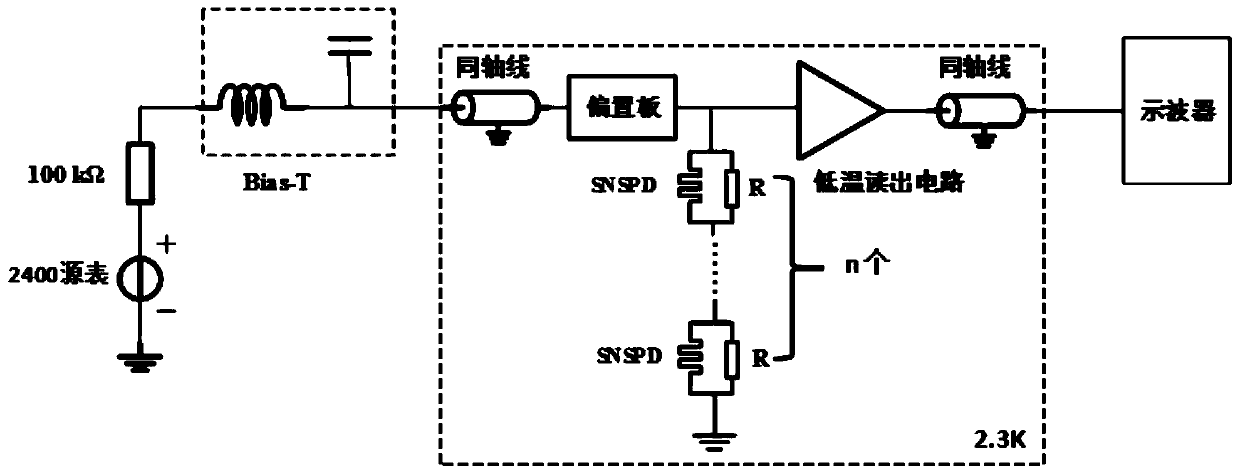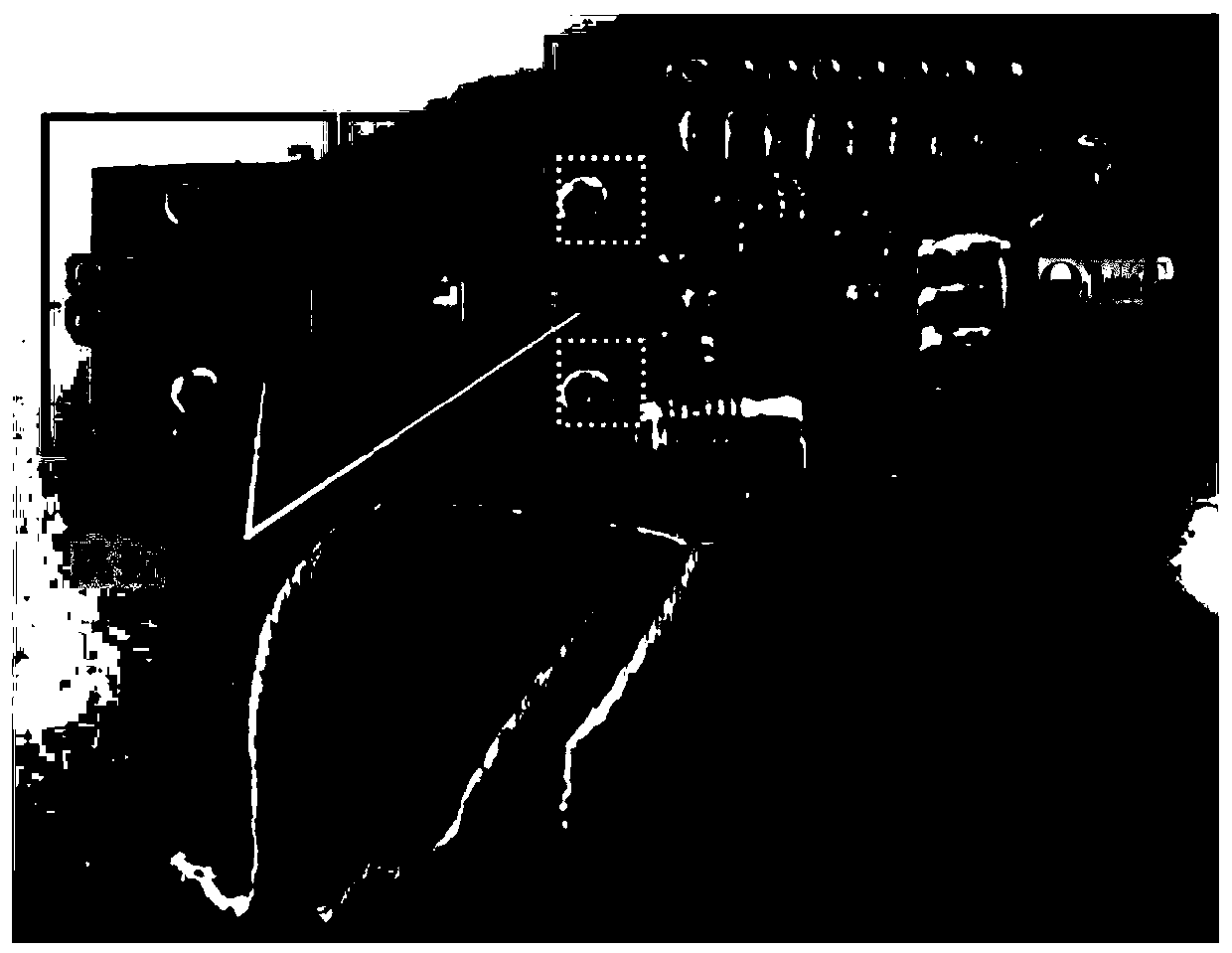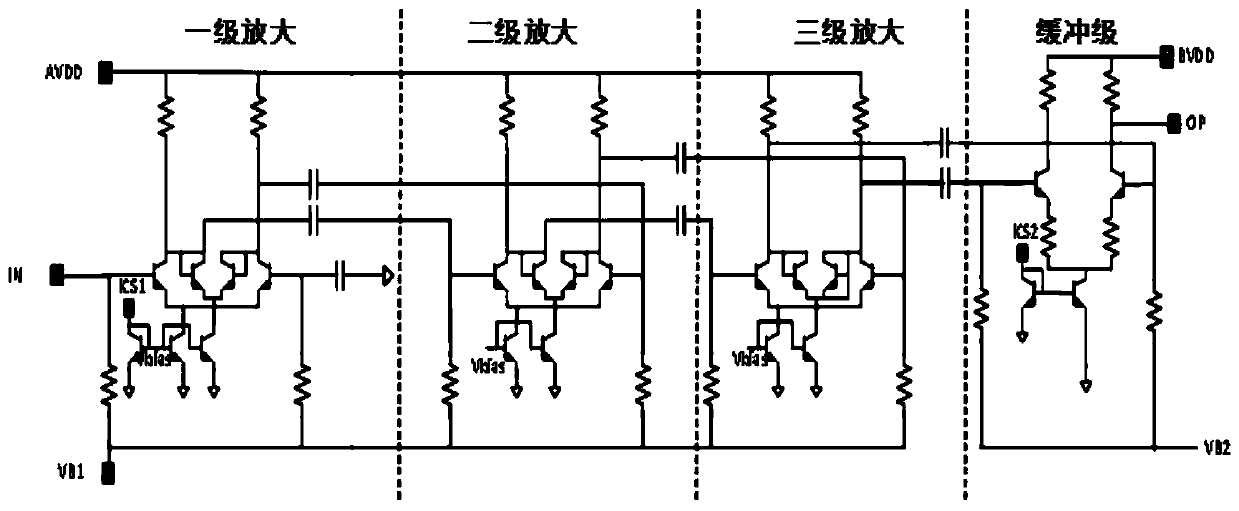Low-temperature reading method of superconducting nanowire single-photon detector
A single-photon detector and superconducting nanowire technology, which is applied in the direction of photometry and measurement circuit using electrical radiation detectors, can solve the problems of impedance mismatch, weak detection signal of superconducting nanowire single-photon detector, etc. Achieve the effect of improving pulse amplitude, good signal-to-noise ratio, and avoiding environmental noise
- Summary
- Abstract
- Description
- Claims
- Application Information
AI Technical Summary
Problems solved by technology
Method used
Image
Examples
Embodiment Construction
[0021] Below in conjunction with accompanying drawing and specific embodiment, further illustrate the present invention, should be understood that these embodiments are only for illustrating the present invention and are not intended to limit the scope of the present invention, after having read the present invention, those skilled in the art will understand various aspects of the present invention Modifications in equivalent forms all fall within the scope defined by the appended claims of this application.
[0022] The block diagram of the low-temperature readout method for superconducting nanowire single-photon detectors is shown in figure 1 As shown, the high input impedance amplifying circuit is connected to the coaxial cable to the normal temperature environment through the SMA connector, and the SNSPD is connected to the high input impedance amplifying circuit and the bias board by bonding wires. Physical picture such as figure 2 As shown, area 1 is the high input imp...
PUM
 Login to View More
Login to View More Abstract
Description
Claims
Application Information
 Login to View More
Login to View More - R&D
- Intellectual Property
- Life Sciences
- Materials
- Tech Scout
- Unparalleled Data Quality
- Higher Quality Content
- 60% Fewer Hallucinations
Browse by: Latest US Patents, China's latest patents, Technical Efficacy Thesaurus, Application Domain, Technology Topic, Popular Technical Reports.
© 2025 PatSnap. All rights reserved.Legal|Privacy policy|Modern Slavery Act Transparency Statement|Sitemap|About US| Contact US: help@patsnap.com



